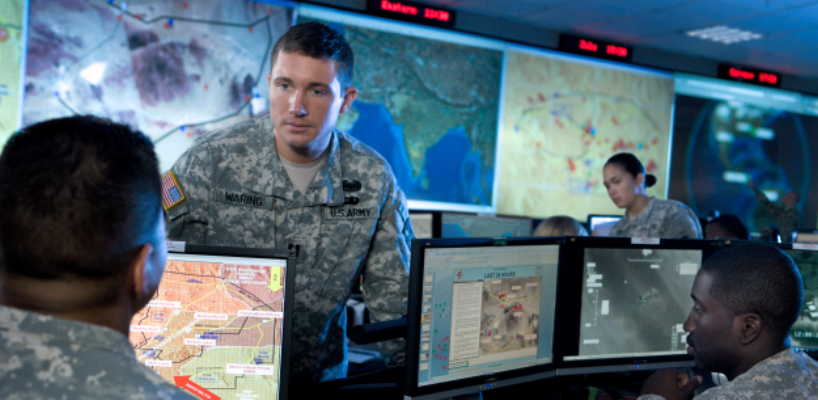The Institute for Veterans and Military Families (IVMF) along with Syracuse University released a report late last year titled “Enhancing Veterans’ Access to STEM Education and Careers: A Labor Market Analysis of Veterans in the STEM Workforce,” which highlighted workforce opportunities in science, technology, engineering and math (STEM) for those transitioning from the military.
The report, which was published under contract with the Council for Adult and Experiential Learning (CAEL), highlighted that in the past decade jobs requiring some level of STEM expertise have grown by 34%. More importantly many of these jobs today do not require a bachelor’s degree. IVMF and Syracuse University noted that this increase in STEM opportunities coincides with veterans who are returning to the civilian world, many with the right skills for those jobs.
The report found that while the majority of those in the labor force, or 94%, today are not in STEM occupations – compared to the 6% who are – veterans actually represent a larger proportion in existing STEM occupations compared to non-veterans at 8% to 6%. Veterans were also found to be 1.47 times more likely to be in a STEM occupation than non-veterans, and veterans entered into STEM occupations at an increasing annual rate of 0.232% points between 2012 and 2016.
Among the top two STEM occupation clusters for veterans were those in the information technology (IT) and computer science cluster at 43%; followed by the engineering STEM cluster at 38%. Of the 49 STEM occupations nearly half exhibited a positive trend of increased veteran participation from 2012 to 2016.
The top STEM occupations for veterans were:
- Software developers and programmers at 13%
- Computer support specialist at 7%
- Computer and information systems managers at 7%
- Engineers at 6% and computer systems analysts at 6%
The occupations that saw the largest positive yearly increase for veterans was computer occupations with 0.85% increase per year, computer support specialist with 0.19%, software developers and programmers with 0.18%, information security analysts with 0.17%, and computer and information system managers with 0.13%.
There were some segments where veterans are filling positions faster than non-veterans. Veterans were 2.6 times more likely to be information security analysts; 2.0 times more likely to be engineering technicians, except drafters; 2.0 times more likely to be atmospheric and space scientists; 1.9 times more likely to be marine engineers and naval architects; 1.8 times more likely to be computer network architects; 1.8 times more likely to be operations research analysts; and 1.7 times more likely to be network and computer systems administrators.
Veterans in the STEM Workforce by Region
South Atlantic region, which includes Washington, D.C. along with Maryland, Virginia, Delaware, West Virginia, North Carolina, South Carolina, Georgia and Florida have exhibited the largest concentration of veterans in the STEM workforce. Not surprisingly, California – which remains the largest state with STEM opportunities – accounted for the most veterans in the STEM workforce from 2012 to 2014.
California accounted for 10% of the total STEM workforce, followed by Texas at 9%, Virginia at 8%, Florida at 7%, North Carolina at 4%, followed by Georgia, Washington, Colorado, and Pennsylvania each at 3%. Washington-Arlington-Alexandria topped the list of metropolitan areas at 9%.
The report found that veterans are also earning slightly more than 8% over their non-veteran peers in STEM occupations – $93,833 compared to $86,676 respectively. Veterans in STEM occupations also have tended to out-earn, at even higher rates, both veterans and non-veteran counterparts in non-STEM fields. Moreover those veterans also tend to experience lower overall unemployment than those in other occupations. However, unemployment was slightly higher for veterans in STEM positions compared to non-veterans.
Back to School for stem careers
While many of the STEM jobs don’t require a bachelor’s degree, some still do. But now members of Congress are hoping to make it easier for veterans to use the Forever GI Bill. On April 10, Rep. Andy Barr (R-Kentucky) introduced a bill that would remove the 128-credit hour requirement that currently prohibits student veterans from using the Edith Nourse Rogers STEM scholarship.
The scholarship, which was created as part of the Harry W. Colmery Veterans Educational Assistance Act of 2017, provides an additional nine months of GI Bill eligibility – or up to $30,000 in benefits – to student veterans pursuing a STEM degree. However, current law mandates that for a veteran to utilize the scholarship the individual must be enrolled in a STEM program that exceeds the required 128-required credit hours.
The Department of Veteran Affairs (VA) has found that at present there are only three states where the average STEM degree even exceeds that number of credit hours. By eliminating the requirement this could ensure that more veterans can pursue STEM degrees.
“It is incumbent upon us to provide our veterans with the tools they need to be successful in their transition to civilian life after serving in the Armed Forces,” Rep. Barr said in a statement. “By removing arbitrary credit hour requirements for student veterans enrolled in STEM programs and giving them more flexibility to use their Forever GI Bill benefits, veterans will be better able to take advantage of the education benefits they are owed.”
The bill has support from both sides of the aisle.
“Science, technology, engineering, and math fields are the future of our 21st-century economy, and it is critical that veterans have the support they need to pursue a STEM degree,” Rep. Mike Levin (D-Calif.), the cosponsor of the bill, said in a statement. “I am proud to help introduce bipartisan legislation that will allow more veterans to pursue STEM degrees, and I will continue to work with my colleagues across the aisle on measures to ensure that veterans can launch careers in high-demand industries.”



